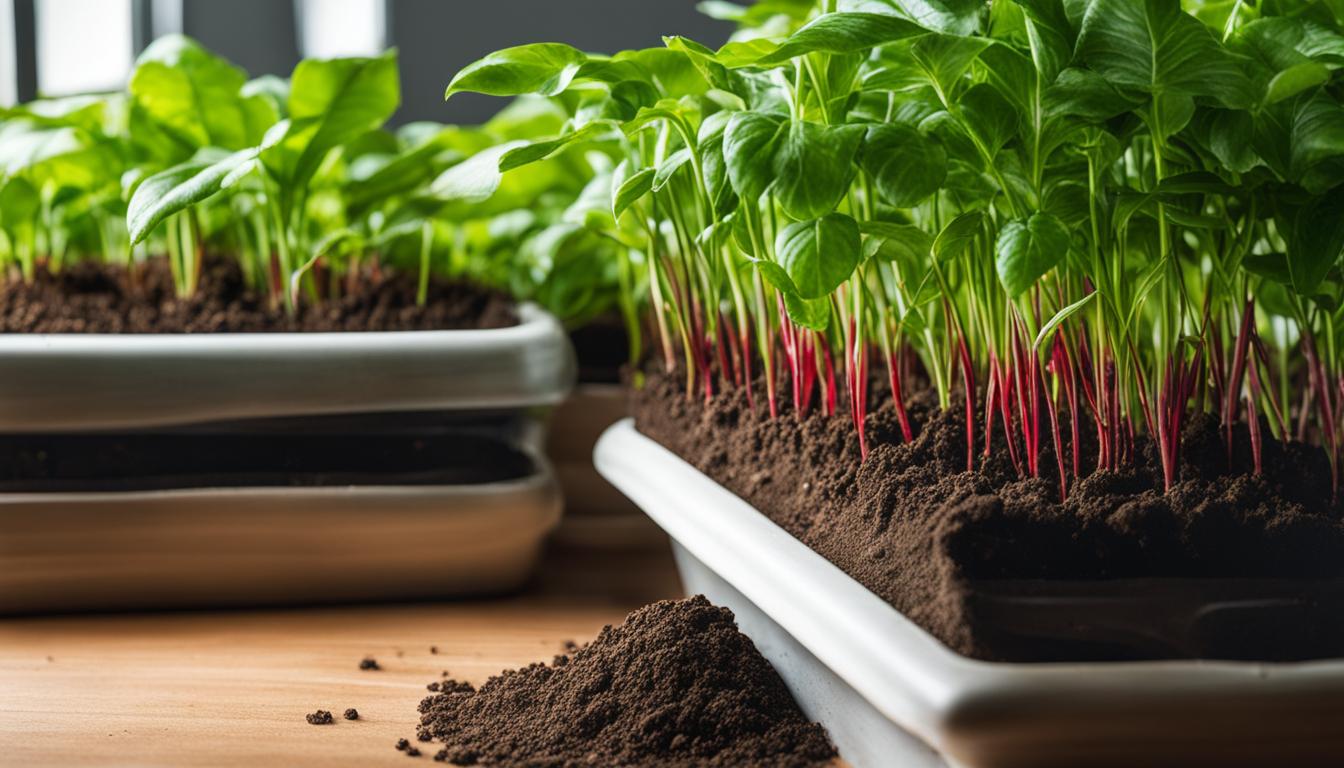
Indoor gardening is a popular hobby for many people, but when it comes to choosing the right cultivation method, the decision between soil and hydroponics can be a tough one. Both methods have their own unique advantages and disadvantages, and understanding the differences is crucial in order to make the best choice for your indoor plants.
Soil-based cultivation, the traditional method of growing plants, provides a natural and nutrient-rich environment for your indoor plants. It allows for better nutrient retention and provides a stable medium for plant roots to anchor. However, soil cultivation requires regular watering and can be more susceptible to pests and diseases if not properly managed.
Hydroponic cultivation, on the other hand, offers several advantages for indoor plants. It uses water-based nutrient solutions to provide plants with all the necessary nutrients, resulting in faster and more efficient growth. Hydroponics also eliminates the need for soil, reducing the risk of pests and diseases. However, hydroponic systems can be more expensive to set up and require regular monitoring and maintenance.
So, which method is better for your indoor plants? Let’s delve deeper into the pros and cons of soil and hydroponics to help you make an informed decision.
Key Takeaways:
- Soil-based cultivation provides a natural growth environment for plants but requires regular watering and can be prone to pests and diseases.
- Hydroponic cultivation offers faster and more efficient growth, eliminates the need for soil, but requires higher setup costs and maintenance.
- Hydroponics is more water-efficient compared to soil cultivation.
- Hydroponics takes up less space, making it ideal for urban dwellers or those with limited garden space.
- Hydroponics allows for precise control and customization over nutrient levels and environmental factors affecting plant growth.
Pros and Cons of Soil Cultivation
When it comes to growing indoor plants, soil cultivation has its fair share of advantages and disadvantages. Understanding these pros and cons can help you make an informed decision that suits your indoor gardening needs.
Advantages of Soil Cultivation:
- Natural Growth Environment: Soil provides a natural medium for plants to grow, mimicking the conditions they would experience in the wild.
- Nutrient-Rich: Soil is rich in essential nutrients that plants need for healthy growth, reducing the need for additional fertilizers.
- Good Nutrient Retention: Soil has the ability to retain moisture and nutrients, providing a steady supply to the plants.
- Stable Root Anchorage: The structure of soil allows plants to anchor their roots firmly, providing stability and support.
Disadvantages of Soil Cultivation:
- Regular Watering: Soil-based cultivation requires regular watering to ensure that plants receive adequate moisture.
- Pest and Disease Risk: Soil can harbor pests and diseases, making it important to implement proper management and control measures.
Overall, soil cultivation offers a natural and nutrient-rich environment for indoor plants, but it does require regular maintenance and care to prevent issues such as overwatering or pest infestations.
| Pros of Soil Cultivation | Cons of Soil Cultivation |
|---|---|
| Natural growth environment | Regular watering required |
| Nutrient-rich | Pest and disease risk |
| Good nutrient retention | |
| Stable root anchorage |
It’s important to consider your personal preferences and capabilities when deciding whether to choose soil cultivation for your indoor plants.
If you enjoy the natural approach and are willing to put in the effort for maintenance, soil-based cultivation can be a rewarding choice. But, if you prefer a low-maintenance option or have limited space, exploring hydroponics may be worth considering.
Pros and Cons of Hydroponic Cultivation
Hydroponic cultivation offers a range of advantages for indoor plants, making it a popular choice among indoor gardeners. One of the key benefits of hydroponics is the efficient use of water and nutrients.
With hydroponics, plants are grown in a water-based nutrient solution, which is recirculated within the system. This not only reduces water wastage but also allows for precise control over water and nutrient levels, ensuring that plants receive the optimal amount of moisture for their growth.
This water efficiency is especially beneficial for those who are conscious of their water usage or live in areas with limited water resources.
In addition to water efficiency, hydroponics eliminates the need for soil, reducing the risk of pests and diseases that are commonly associated with traditional soil-based cultivation.
By growing plants in a controlled environment, hydroponics provides a clean and sterile growing medium. This reduces the reliance on pesticides and allows for a healthier and more organic approach to gardening.
Also, with hydroponics, plants have direct access to nutrients, resulting in faster and more efficient growth compared to soil-based cultivation.
But, it’s important to consider the cost and maintenance factors associated with hydroponic cultivation. Setting up a hydroponic system can be more expensive initially, as it requires specialized equipment and materials.
Hydroponics requires regular monitoring and maintenance to ensure that the nutrient levels, pH, and other environmental factors are properly maintained. This level of attention may not be suitable for everyone, especially those who prefer a low-maintenance gardening approach.
Advantages of Hydroponic Cultivation:
- Water efficiency and precise control over nutrient levels
- Elimination of pests and diseases
- Faster and more efficient plant growth
Considerations for Hydroponic Cultivation:
- Higher initial setup costs
- Regular monitoring and maintenance required
| Advantages of Hydroponic Cultivation | Considerations for Hydroponic Cultivation |
|---|---|
| Water efficiency and precise control over nutrient levels | Higher initial setup costs |
| Elimination of pests and diseases | Regular monitoring and maintenance required |
| Faster and more efficient plant growth | – |
Water Efficiency of Hydroponics
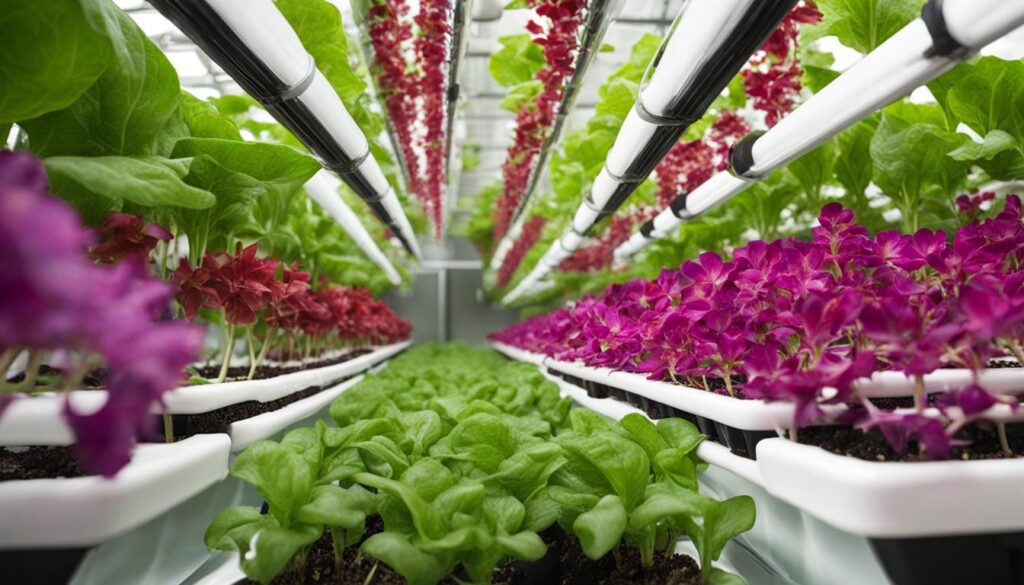
One major advantage of hydroponics is its water efficiency. Hydroponic systems use less water compared to traditional soil cultivation.
This is because the nutrient-rich water is recirculated within the system, minimizing water wastage. Hydroponics allows for precise control over water and nutrient levels, ensuring that plants receive just the right amount of moisture they need for optimal growth.
Comparing Water Usage: Hydroponics vs. Soil
To understand the water efficiency of hydroponics compared to soil cultivation, let’s take a closer look at the numbers. According to studies, hydroponics uses up to 90% less water compared to traditional soil-based cultivation methods.
This significant reduction in water usage is due to the closed-loop system in hydroponics, where water and nutrients are continuously reused.
In contrast, soil-based cultivation requires frequent watering to ensure that plants receive enough moisture. This can lead to water wastage due to runoff and evaporation.
The amount of water absorbed by the soil may not always be efficiently utilized by the plants, resulting in potential waste.
| Water Usage | Hydroponics | Soil Cultivation |
|---|---|---|
| Water Efficiency | Up to 90% less water usage | Higher water usage due to evaporation and potential waste |
| Reuse of Water | Water and nutrient solutions are recirculated | Water is not reusable and can be lost through runoff |
| Precise Control | Water and nutrient levels can be precisely controlled | Water absorption by soil may not always be efficiently utilized |
In addition to water efficiency, the precise control over water and nutrient levels in hydroponics allows for optimal plant growth.
By providing plants with the exact amount of moisture they need, hydroponics minimizes the risk of overwatering or underwatering, ensuring healthier root development and overall plant health.
Overall, the water efficiency of hydroponics makes it an attractive option for indoor plant care. Not only does it help conserve water, but it also allows for more precise control over plant hydration, leading to healthier and more efficient growth.
Space Saving with Hydroponics
One of the advantages of hydroponics for indoor gardening is its space-saving nature. Unlike traditional soil-based cultivation, hydroponics does not require the use of soil as a growth medium.
This means that hydroponic systems take up less space, making them an ideal choice for those with limited indoor garden space. Whether you live in a small apartment or have a small designated area for gardening, hydroponics allows you to make efficient use of the available space.
With soil cultivation, plants require enough space for their roots to spread and anchor in the soil. This can limit the number of plants you can grow in a given area.
In contrast, hydroponics enables you to grow multiple plants vertically, maximizing the utilization of your space. By utilizing techniques such as vertical farming or hydroponic towers, you can stack plants on top of each other, increasing your indoor garden’s capacity without taking up additional space.
To illustrate the space-saving potential of hydroponics, let’s take a look at the following table:
| Methods of Indoor Plant Cultivation | Space Utilization |
|---|---|
| Soil-based Cultivation | Takes up more horizontal space due to the need for soil and root spread |
| Hydroponic Cultivation | Allows for vertical growth, maximizing space utilization |
This table clearly demonstrates the space-saving advantage of hydroponics. By utilizing hydroponic systems, you can grow a larger number of plants in a smaller area, making it an ideal option for indoor gardening.
Control and Customization in Hydroponics
When it comes to indoor plant growth, control and customization are key factors to consider. One of the major advantages of hydroponics is the level of control it provides over various environmental factors that affect plant growth.
With hydroponics, I have the ability to precisely adjust nutrient levels, pH levels, and other growing conditions to create the ideal environment for my plants.
This level of control allows me to tailor the growth of my plants based on their specific needs. For example, if I have a plant that requires a higher concentration of certain nutrients, I can easily adjust the nutrient solution to meet those requirements.
This customization ensures that each plant receives the optimal amount of nutrients, resulting in healthier and more vigorous growth.
Customizing Lighting:
In addition to nutrient control, hydroponics also allows for customization of lighting conditions. I can choose the type of grow lights and adjust their intensity and duration to mimic natural sunlight. This is especially beneficial for plants that require specific light conditions for optimal growth.
Furthermore, hydroponic systems also offer the ability to control other environmental factors such as temperature and humidity.
By maintaining these factors at the ideal levels, I can create a stable and nurturing environment that promotes healthy plant growth throughout the year, regardless of external weather conditions.
Overall, the control and customization offered by hydroponics make it a preferred choice for many indoor gardeners. The ability to tailor the growth environment to the specific needs of my plants ensures that they thrive and reach their maximum potential.
With the flexibility provided by hydroponics, I can create an indoor garden that suits my preferences and cultivates healthy, vibrant plants.
Cost Considerations of Soil and Hydroponics
When considering indoor gardening options, cost is an important factor to take into account. Both soil and hydroponic cultivation methods come with their own set of costs, and understanding these expenses can help you make an informed choice that aligns with your budget.
On the one hand, soil cultivation may be more cost-effective initially. It requires less specialized equipment, and soil is readily available in most gardening stores.
This makes it a more affordable option for those just starting out or on a tight budget. However, it’s important to note that soil-based cultivation may require additional investments in fertilizers and other soil amendments to ensure optimal plant nutrition.
On the other hand, hydroponic systems can have higher setup costs. The equipment, such as grow lights, pumps, and nutrient solutions, can be more expensive upfront.
But, hydroponics can offer long-term savings in water usage and space utilization. With hydroponics, plants use water more efficiently as it is recirculated within the system, minimizing wastage.
Also, since hydroponics does not require soil, it allows for more plants to be grown in a smaller space, potentially increasing yield and saving money in the long run.
| Soil Cultivation | Hydroponic Cultivation | |
|---|---|---|
| Initial Setup Costs | Lower | Higher |
| Water Usage | Variable, depending on watering practices | Lower, water is recirculated |
| Space Utilization | Requires more space | Efficient use of space, can grow more plants in a smaller area |
| Long-Term Savings | May require additional investment in fertilizers and soil amendments | Potential savings in water usage and increased yield |
Ultimately, the choice between soil and hydroponics will depend on your budget and long-term goals. If you have limited funds but are willing to invest time in soil preparation and maintenance, soil cultivation may be the more cost-effective option for you.
On the other hand, if you have the initial capital to invest in hydroponic systems and prioritize water efficiency and space utilization, hydroponics can offer long-term savings and potentially higher yields.
Maintenance and Pest Control in Hydroponics vs. Soil
When it comes to maintenance and pest control, hydroponics generally requires less effort compared to soil cultivation. One of the advantages of hydroponic systems is the absence of soil-borne pests and diseases.
Without soil, there is a reduced risk of infestations and infections that can harm your plants. This eliminates the need for extensive pest control measures, saving you time and effort.
But, it’s important to note that hydroponics still requires regular monitoring to ensure optimal plant growth. You’ll need to keep a close eye on nutrient levels and pH balance to provide your plants with the ideal growing conditions.
This can be easily managed using testing kits and adjusting the nutrient solution accordingly. Regular maintenance tasks like cleaning and maintaining the system’s components are also necessary to keep your hydroponic setup running smoothly.
In contrast, soil cultivation may require more attention to pest control and disease prevention. Soil-borne pests such as aphids, snails, and fungi can pose a threat to the health of your plants.
It’s important to implement preventive measures like proper soil sterilization, regular inspection, and the use of organic pest-control methods to protect your plants from potential threats.
Also, soil-based cultivation may also require regular weeding to keep unwanted plants from competing with your indoor plants for nutrients and space.
In summary, while hydroponics offers the advantage of reduced pest control efforts, regular monitoring of nutrient levels and pH balance is still necessary.
Soil cultivation, on the other hand, requires more attention to pest control and disease prevention. Ultimately, the choice between hydroponics and soil depends on your preference and the amount of time you are willing to invest in maintaining and protecting your indoor plants.
Maintenance and Pest Control Comparison
| Hydroponics | Soil Cultivation | |
|---|---|---|
| Pest Control | Lower risk of soil-borne pests Reduced need for pest control measures | Potential risk of soil-borne pests Regular pest control measures may be required |
| Disease Prevention | Lower risk of soil-borne diseases | Potential risk of soil-borne diseases |
| Monitoring | Regular monitoring of nutrient levels and pH balance | Regular monitoring of nutrient levels, pH balance, and soil moisture |
| Maintenance | Regular cleaning and maintenance of system components | Possible weeding Regular soil maintenance and amendment |
Growth Rate and Yield in Hydroponics
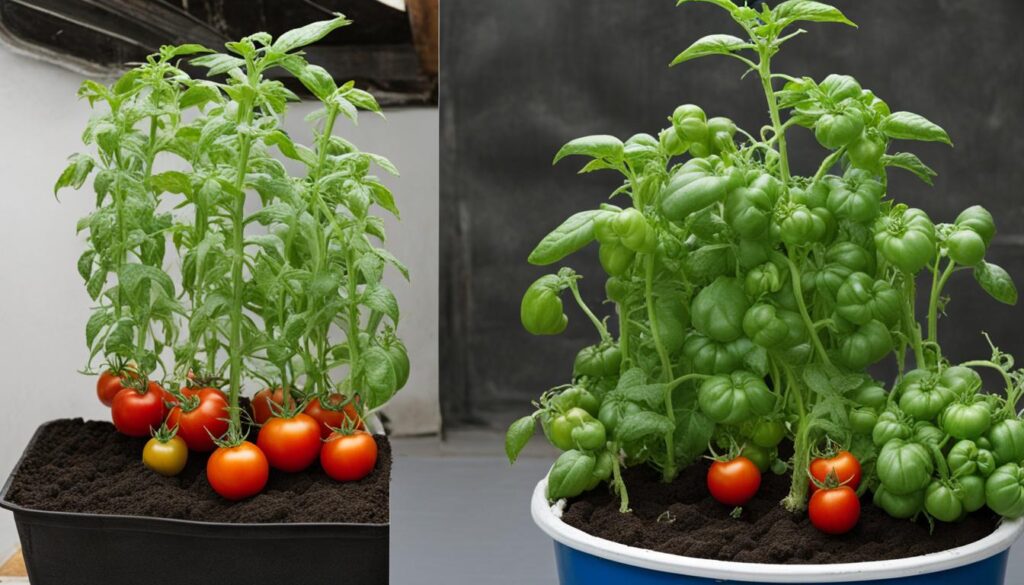
When it comes to the growth rate and yield of indoor plants, hydroponics has proven to be a highly efficient cultivation method.
The precise control over nutrient levels and growing conditions in hydroponics allows plants to thrive and reach maturity at a faster pace compared to soil cultivation.
This accelerated growth rate can be attributed to the optimized nutrient delivery system in hydroponics, ensuring that plants receive all the necessary elements for healthy development.
In addition to faster growth, hydroponics also offers the potential for higher yields. The controlled environment in hydroponic systems allows for optimal plant growth, leading to increased crop production.
With the ability to customize nutrient levels, pH, and other environmental factors, hydroponics creates an ideal growing environment that maximizes the potential yield of indoor plants.
Comparing Growth Rate and Yield: Hydroponics vs. Soil
While hydroponics has shown superior growth rate and yield potential, it is important to consider the specific needs and characteristics of different plant species.
Some plants may thrive better in soil-based cultivation, while others may benefit more from hydroponics. Factors such as root structure, nutrient requirements, and overall growth habits can influence the suitability of a particular cultivation method.
To illustrate the differences in growth rate and yield between hydroponics and soil cultivation, let’s take a look at a comparative table showcasing the performance of two popular indoor plants:
| Plant Variety | Growth Rate (in weeks) | Yield (per plant) |
|---|---|---|
| Tomatoes | 8-10 | 15-20 pounds |
| Lettuce | 4-6 | 1-2 pounds |
This table highlights the potential for rapid growth and higher yields in hydroponics compared to soil cultivation.
While the exact results may vary depending on various factors such as plant care, nutrient management, and environmental conditions, it is evident that hydroponics can offer significant advantages in terms of growth rate and overall productivity.
By understanding the growth potential of hydroponics, indoor gardeners can make informed decisions when choosing the most suitable cultivation method for their specific plant varieties and goals.
Whether it’s achieving faster growth or maximizing yield, hydroponics provides a viable option for those looking to optimize the productivity of their indoor gardening endeavors.
Flavor and Nutrient Content in Soil vs. Hydroponics
The flavor and nutrient content of indoor plants can be influenced by the cultivation method used. While hydroponics offers faster growth and higher yields, some argue that soil cultivation produces plants with better flavor and higher nutrient content.
Plants grown in soil benefit from the natural soil ecosystem and the presence of microorganisms. These factors contribute to the overall taste and nutritional value of the plants. Soil provides a diverse array of nutrients that are readily available to the plants, resulting in a rich flavor profile.
On the other hand, hydroponics relies on water-based nutrient solutions to provide plants with the necessary nutrients.
While hydroponically-grown plants can still be nutritious, the absence of soil and its natural composition may impact the final flavor and nutrient content. Some argue that the lack of soil-derived nutrients may result in a less complex flavor profile.
But, it’s important to note that the debate between soil and hydroponics in terms of flavor and nutrient content is still ongoing.
The final taste and nutritional value of indoor plants can be influenced by various factors, including the specific plant species, the nutrient solution used in hydroponics, and the growing conditions.
Ultimately, personal preferences and priorities should guide the choice between soil and hydroponics for indoor gardening.
FAQ
Which is better for indoor plants: soil or hydroponics?
The choice between soil and hydroponics depends on your preferences and specific needs. Both methods have their own advantages and disadvantages, so it’s important to understand the differences before making a decision.
What are the pros and cons of soil cultivation?
Soil cultivation provides a natural growth environment for plants and is rich in nutrients. However, it requires regular watering and can be prone to pests and diseases if not properly managed.
What are the pros and cons of hydroponic cultivation?
Hydroponic cultivation offers faster and more efficient growth, eliminates the need for soil, and reduces the risk of pests and diseases. However, it can be more expensive to set up and requires regular monitoring and maintenance.
How water efficient is hydroponics compared to soil?
Hydroponic systems use less water compared to traditional soil cultivation. The nutrient-rich water is recirculated within the system, minimizing water wastage.
How does hydroponics save space in indoor gardening?
Hydroponic systems take up less space compared to traditional soil-based cultivation, allowing for more efficient use of limited indoor space.
What control and customization does hydroponics offer?
With hydroponics, you have complete control over nutrient levels, pH, and other environmental factors affecting plant growth. This allows you to create the ideal conditions for your plants and tailor their growth based on their specific needs.
How does the cost compare between soil and hydroponics?
Soil cultivation may be more cost-effective initially, but hydroponic systems can offer long-term savings in water usage and space utilization. The setup costs for hydroponics may be higher, but increased yield potential and cost savings in the long run should be considered.
What maintenance and pest control is required for hydroponics vs. soil?
Hydroponics requires less maintenance compared to soil cultivation. With hydroponics, there is no need for weeding, and the risk of soil-borne pests and diseases is eliminated, reducing the need for pest control measures.
Does hydroponics promote faster growth and higher yields?
Yes, hydroponics has been shown to promote faster growth and higher yields compared to soil cultivation. The precise control over nutrient levels and growing conditions in hydroponics allows plants to grow more efficiently.
Does soil or hydroponics produce better flavor and nutrient content?
The debate between soil and hydroponics in terms of flavor and nutrient content is ongoing and can vary depending on the specific plant and growing conditions.

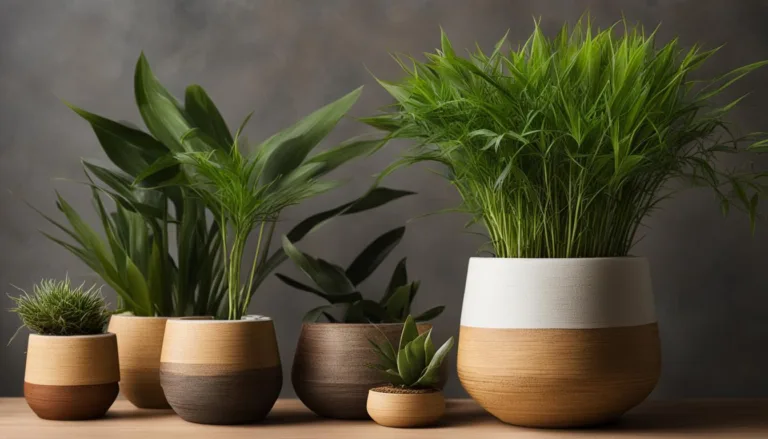
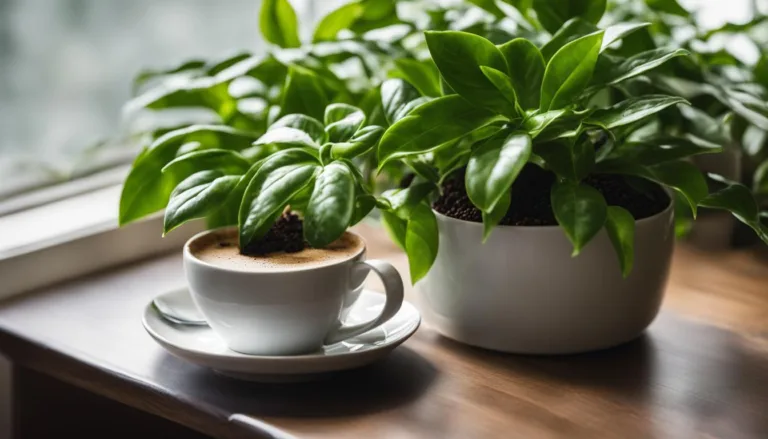
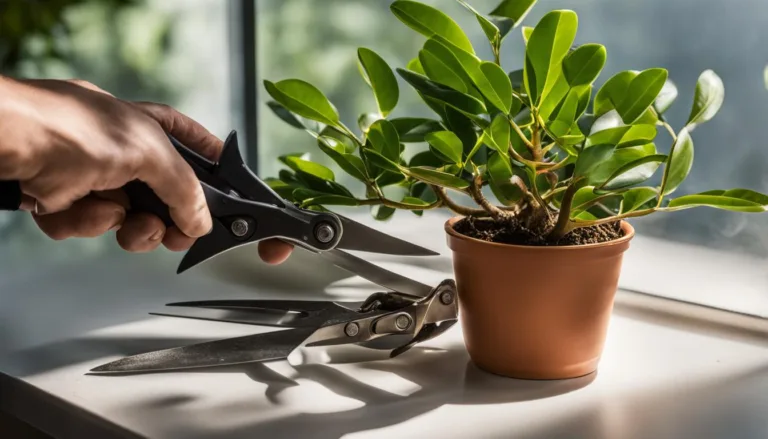
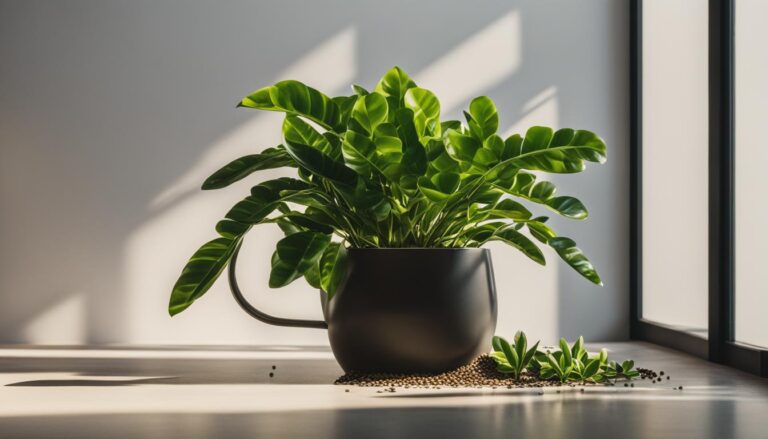
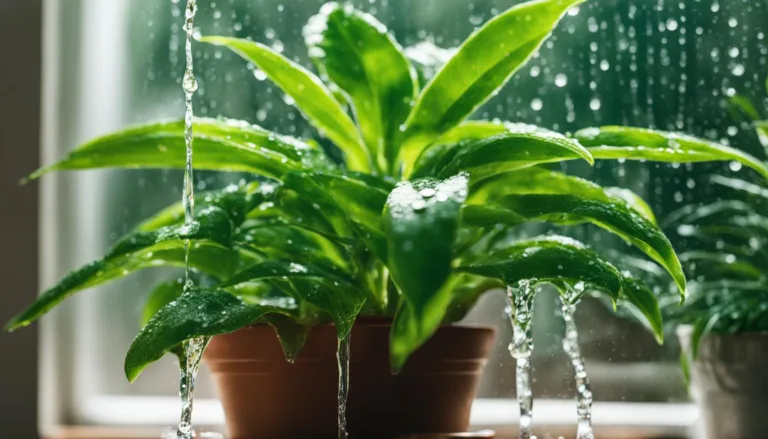

One Comment
Comments are closed.